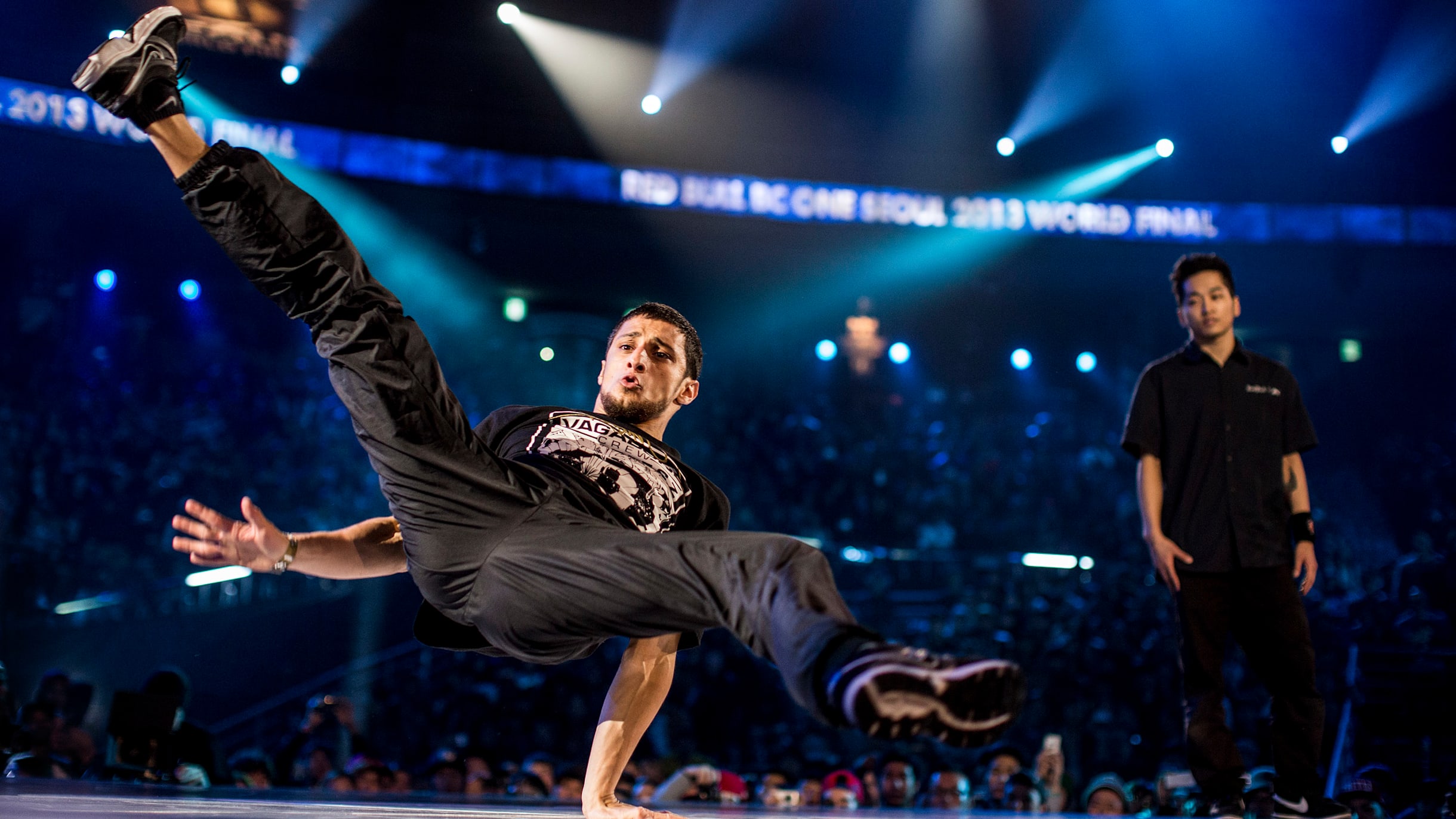The Origin of Breaking Dancing
Breaking dancing, often simply called "breaking" or "b-boying," has evolved into a global phenomenon that blends athleticism, rhythm, and creativity. Its roots, however, lie deep in the rich cultural soil of the Bronx in the 1970s. 
Roots in the Bronx: The Birthplace of Breaking
The early 1970s in the Bronx, New York City, were characterized by urban decay and socio-economic struggles. Amidst the backdrop of economic hardship, the Bronx became a fertile ground for cultural innovation.
Breaking dancing emerged as a response to the environment, embodying the resilience and creativity of the youth.
The Role of DJ Kool Herc
At the heart of breaking's origin is DJ Kool Herc, a Jamaican-American DJ whose real name is Clive Campbell. In 1973, DJ Kool Herc began hosting block parties where he introduced a novel approach to music. He extended the instrumental breaks of songs using two turntables, allowing dancers more time to showcase their moves.
These extended breaks, known as "breakbeats," became the foundation for breaking dancing. Dancers, or "b-boys" and "b-girls," would take to the floor during these breaks, showcasing a unique blend of footwork, spins, and athletic maneuvers.
The Influence of the Black and Puerto Rican Communities
Breaking dancing's development was heavily influenced by the cultural expressions of the Black and Puerto Rican communities in the Bronx.
These communities brought rich traditions of dance and music, including salsa, mambo, and African rhythms, which blended seamlessly with the emerging hip-hop culture.
The dance itself became a means of storytelling, community engagement, and self-expression, reflecting the lived experiences and aspirations of these communities.
Evolution and Cultural Significance
 Breaking dancing quickly transcended its origins, evolving into a distinct element of hip-hop culture alongside graffiti art, MCing (rapping), and DJing.
Breaking dancing quickly transcended its origins, evolving into a distinct element of hip-hop culture alongside graffiti art, MCing (rapping), and DJing.
The dance style became a powerful form of expression and a way for individuals to gain respect and recognition within their communities.
The Battle Culture
One of the defining aspects of breaking is the "battle" culture, where dancers compete against each other in displays of skill, creativity, and style. These battles are not just physical contests but also cultural exchanges, where dancers push each other to innovate and excel.
The competitive nature of battles has driven the evolution of breaking, leading to increasingly complex and dynamic moves.
Media Exposure and Global Reach
The late 1970s and early 1980s saw breaking dancing gain mainstream attention through movies, music videos, and television shows.
Films like "Wild Style" (1983) and "Beat Street" (1984) brought breaking to a global audience, showcasing the energy and creativity of the dance.
As breaking dancing spread internationally, it absorbed influences from various cultures, leading to diverse styles and interpretations while maintaining its core elements.
Breaking as a Global Phenomenon
Today, breaking dancing is a global phenomenon with a vibrant international community. It has evolved into a highly respected and competitive dance form, with international competitions such as the Red Bull BC One and the World B-Boy Series attracting the best dancers from around the world.
Institutional Recognition
Breaking dancing's journey from the streets of the Bronx to the global stage reached a significant milestone in 2020 when it was announced that breaking would be included in the 2024 Paris Olympic Games.
This inclusion is a testament to the dance's cultural impact and its recognition as a legitimate sport.
The Olympic spotlight will undoubtedly bring breaking dancing to an even wider audience, further solidifying its place in the pantheon of global cultural expressions.
Cultural Exchange and Fusion
Breaking dancing's international reach has fostered a rich exchange of cultural influences.
Dancers from different countries bring their unique styles and traditions, infusing breaking with fresh perspectives and innovations.
This fusion of cultures continues to drive the evolution of breaking, ensuring that it remains a dynamic and ever-evolving art form.
The Future of Breaking Dancing
As breaking dancing continues to evolve, it faces both opportunities and challenges. The inclusion in the Olympics represents a significant opportunity for greater visibility and institutional support.
However, there is also the challenge of maintaining the dance's authenticity and cultural roots amidst increasing commercialization and mainstream acceptance.
Preservation of Culture and Authenticity
For many within the breaking community, preserving the dance's cultural roots and authenticity is paramount.
Efforts are being made to document and teach the history of breaking, ensuring that new generations of dancers understand and appreciate its origins.
Community events, workshops, and educational programs play a crucial role in passing down the traditions and values of breaking dancing.
Innovation and Adaptation
Breaking dancing's future lies in its ability to innovate and adapt while staying true to its core principles. The dance continues to evolve with new moves, techniques, and styles, driven by the creativity and passion of its practitioners. As breaking dancing enters new arenas such as the Olympics, it will be fascinating to see how it continues to adapt and inspire.
Conclusion
The origin of breaking dancing is a story of resilience, creativity, and cultural fusion. From its humble beginnings in the Bronx to its recognition on the global stage, breaking dancing has come a long way.
It stands as a testament to the power of cultural expression and the ability of art to transcend boundaries.
As breaking dancing continues to evolve, it remains deeply rooted in the spirit of innovation and community that gave birth to it. The future of breaking dancing is bright, with endless possibilities for growth and transformation.
Sources
- History of Breaking
- DJ Kool Herc and the Birth of Hip-Hop
- The Evolution of Breaking Dancing
- The Global Impact of Breaking Dancing
- Breaking Battles and Competitions
- Preserving Breaking Dancing's Roots
- Breaking Dancing: From Streets to Olympics
- Cultural Significance of Breaking































